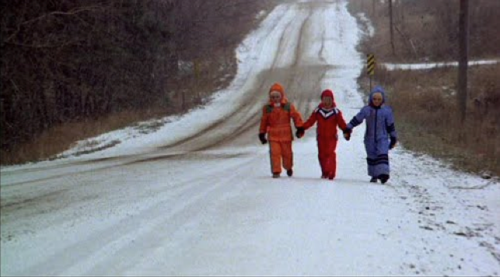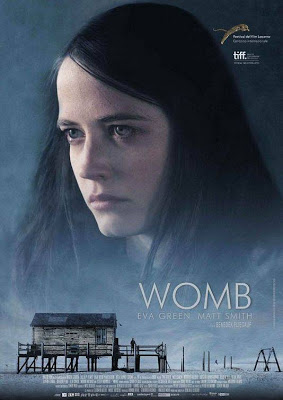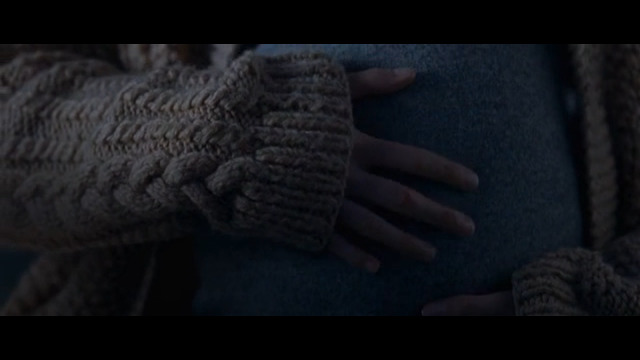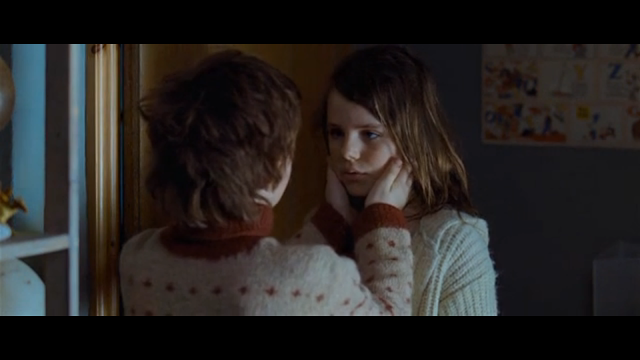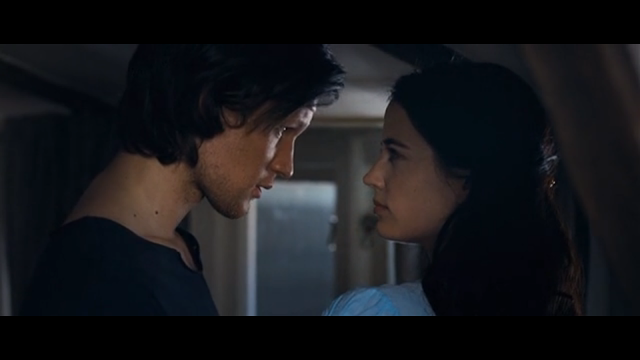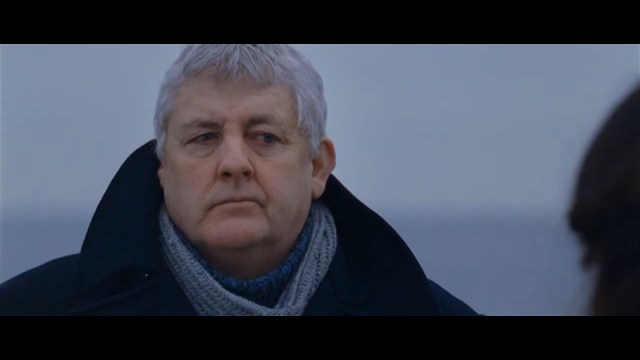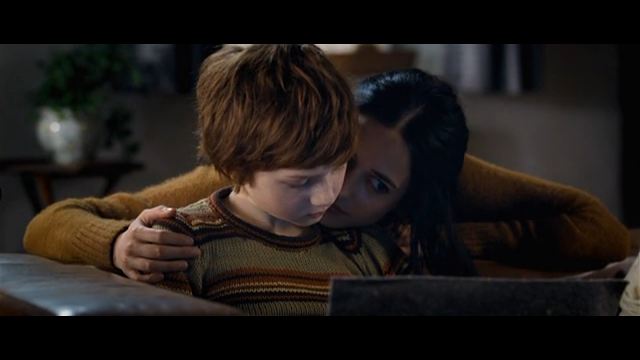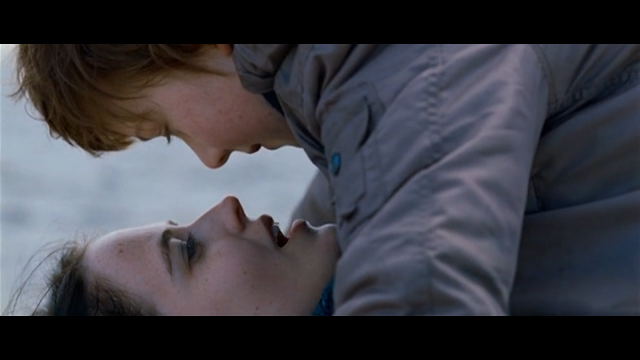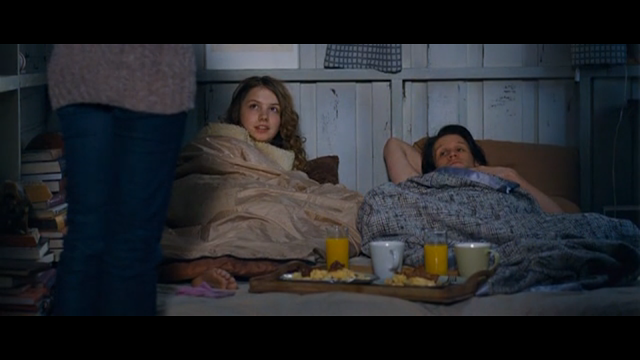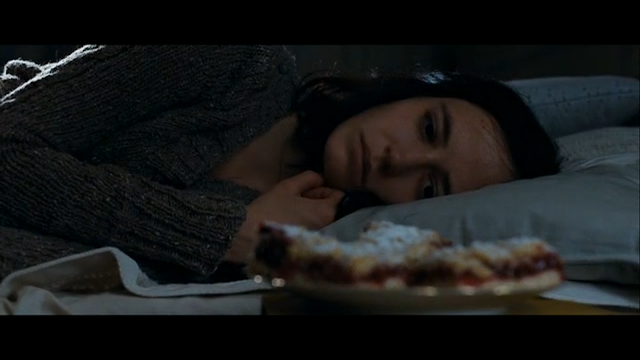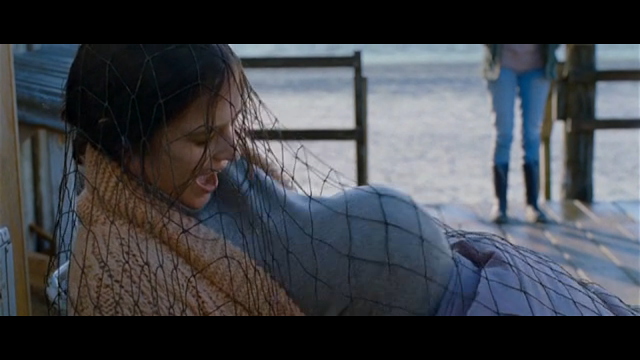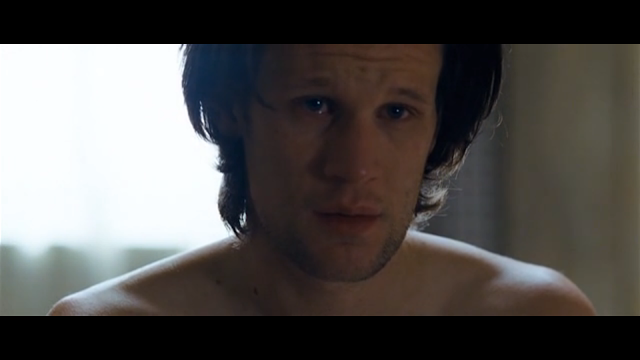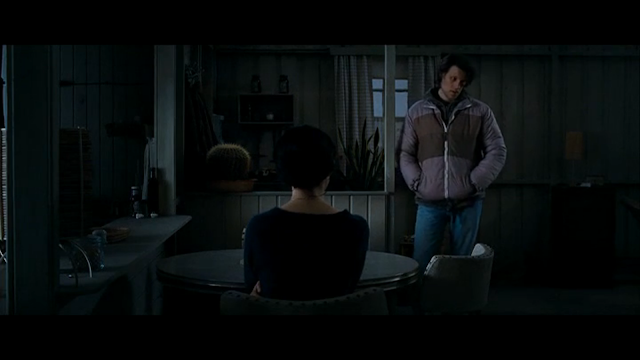This guest post by Eli Lewy appears as part of our theme week on The Terror of Little Girls.
The association between women and reproductive activities is a common theme in horror films. Female genitals have been perceived as mysterious and uncanny by men during the course of Western history. In Canadian film director David Cronenberg’s 1979 film The Brood, Nola, a wife and mother, is in a psychiatric institution where she uses Dr. Raglan’s methods of psychoplasmics to manifest her emotional and psychological troubles physically. Nola has failed in her role as a nurturing mother to her daughter Candy, and being a loving stable wife to her husband Frank, a leading cause of her psychological fragmentation. Nola’s inner rage and pain causes her to form an external womb-like sac that gives birth to evil children with whom she shares a telepathic bond. Nola’s ability to give birth parthenogenetically[1] is what constructs her as “monstrous.” Her womb, one of the primary symbols of biological womanhood, is constructed as being a volatile space filled with danger.
In The Brood, Frank, Nola’s husband, attempts to act as the protector of his daughter Candy against the evil mother, Nola. For Cronenberg, Candy represents the symbolic order and influence of the father, precisely what Nola wishes to eradicate. Candy is supposed to come “home to mommy” and have no fatherly influence. The characters in the film are defined by rigid gender constructs, or alternatively, through their attempts at living up to them.
Frank, who has recently separated from Nola, is discriminated against in the judicial system even though his wife is far from capable of nurturing Candy. When Frank attempts to take steps against Nola and get full custody of his daughter, his lawyer plainly tells him that he has no legal rights to deny Nola of her mothering responsibilities as “the law believes in motherhood.” The filmmaker suggests that even unfit mothers are preferred over fathers. The criticism of the supposed female dominance over the realm of the family in the film is clear once the audiences realize what kind of a mother Nola really is. The horror occurs when the father is powerless, rendered irrelevant by a “monstrous” mother.
Nola is in desperate need of feeling loved and accepted by Frank, who in turn, is disgusted by her. The Brood broaches the idea of a hereditary female cycle of abuse and evil: Nola’s mother was emotionally and physically abusive toward her which, in turn, caused Nola to be abusive toward her young daughter Candy. The Brood complies with the ancient sexist notion that maternal desire is the source of monstrosity (Creed 46). Most of Dr. Raglan’s patients’ rage manifests itself in boils and lesions, unlike Nola, whose rage comes in the form of an external womb capable of birthing deformed beings. Not only is her body and mental state in shambles, she has incorporated the brood children into the mix who bring harm to others. This conveys a message that Cronenberg returns to frequently: females who dare to be aggressive and expressive destruct others. Nola’s rage is seen as something that the women in her family inherited, but there is no attempt at understanding why this has happened.
During Candy’s stay with her grandmother, she sees a picture of her mother as a child in the hospital. Nola looks a lot like Candy; in fact, she is played by the same young actress. This is the first instance in which Candy shows some sense of presence, interest, and involvement in the film as she is usually catatonic and detached. The traumatic events she has lived through are reflected in her blank stare. Candy is one of the main victims in the film; she witnesses her grandmother’s death, gets viciously beaten by the brood, and is constantly under threat.
Candy could easily be mistaken for one of the brood children with her straight blonde hair and the almost identical red parka. In fact, even her own father mistakes Candy for a brood for a fleeting second. The brood children know that she needs to come with them to the institute; they are the same in some way. However, once Nola commands her brood to attack Candy, their blood ties no longer matter and they intend on killing Candy.


When Frank attempts to save the kidnapped Candy, he comes face to face with Nola for the first time in the film. A primal birthing scene ensues. She is sitting on a platform in a regal manner. Nola questions Frank’s love for her and confidently explains that “what’s been happening to me is too strange, too strange to share with anyone from my old life.” She then proceeds to raise her arms to reveal what lies underneath her white nightgown: her external womb. The whiteness of Nola’s robe is juxtaposed with the “monstrosity” that lies beneath. The camera switches between Nola’s confident, queen-like posing and Frank’s pure and utter disgust for what his eyes are seeing.

As though the sight of this hideous sac were not enough, Nola proceeds to bend over, bite the sac, and take out her bloodied brood fetus. However, the epitome of Nola’s “freakishness” is yet to come. Nola licks away the blood and amniotic fluid, irrevocably propelling Nola to an abject being completely comfortable with her animalistic maternal instincts, reproductive functions, and disfigurement. We see all this unfold though Frank’s eyes – we are him in this scene, disgusted and disbelieving. Nola changes from human to monster. She was unaware of the fact that the brood children are murderous, but once Frank tells her she does not change her demeanor and smiles maniacally, condoning her progeny’s actions. Rage and psychoplasmics have sucked the humanity out of her. Once Frank tells her the truth, which is that he is there to take their daughter away from her, Nola coldly says, “I’d kill Candice rather than let you take her away from me.” Frank then proceeds to leap and strangle his wife to death. He begs her to make the brood children stop what they are doing to Candy, but Nola is too far gone, her humanity has been stripped away. Nola’s plea to “kill me, kill me” is masochistic; she is letting Frank give into his urge to destroy the maternal (Beard 85). Frank is full of rage while killing Nola, which is the only effective thing he does throughout the picture. However, this does not prevent Candy from being exposed to the disease; he has not saved her. We then see the boil on her arm at the end of the film, implying that Candy will carry on the dubious honor of the clan’s “female legacy.”
Works Cited
Beard, William. The Artist as Monster: The Cinema of David Cronenberg. Toronto: University of Toronto Press. 2006.
Creed, Barbara. The Monstrous Feminine: Film, Feminism, Psychoanalysis. London and New York: Routledge. 1993.
Eli Lewy is a third culture kid, burgeoning filmmaker, and Master’s student studying US Studies. She currently resides in Berlin. You can read her film review blog here: www.film-nut.tumblr.com and follow her on twitter at @scopophiliafilm
